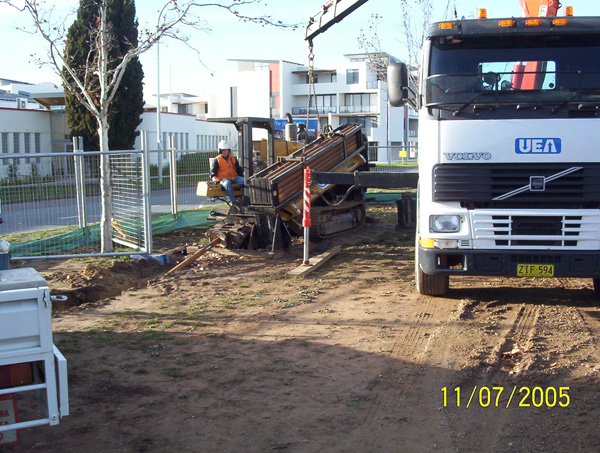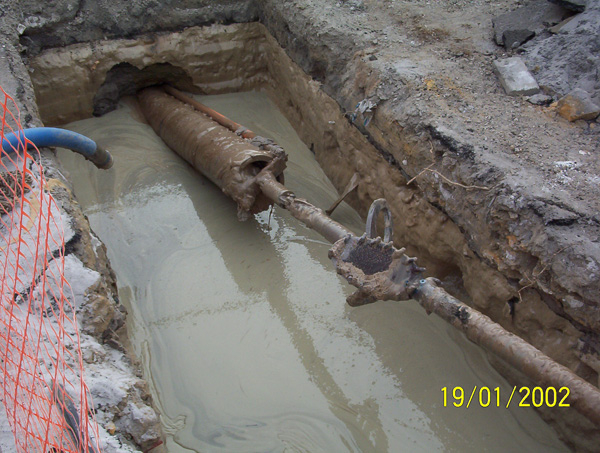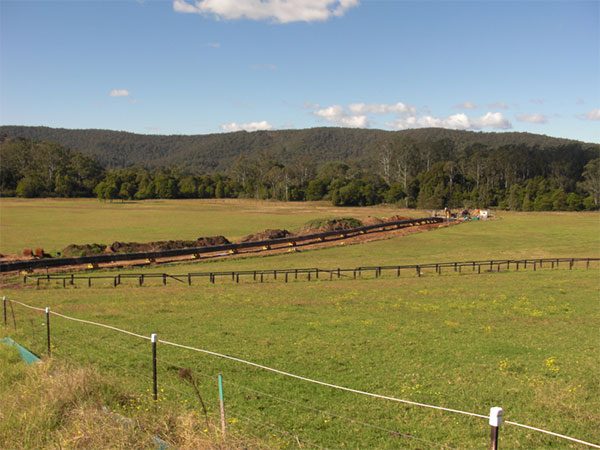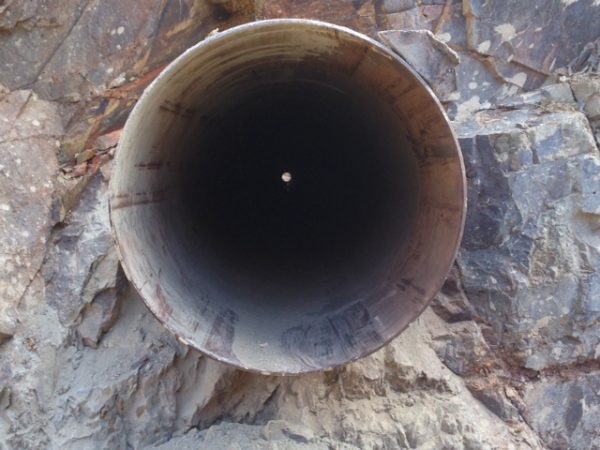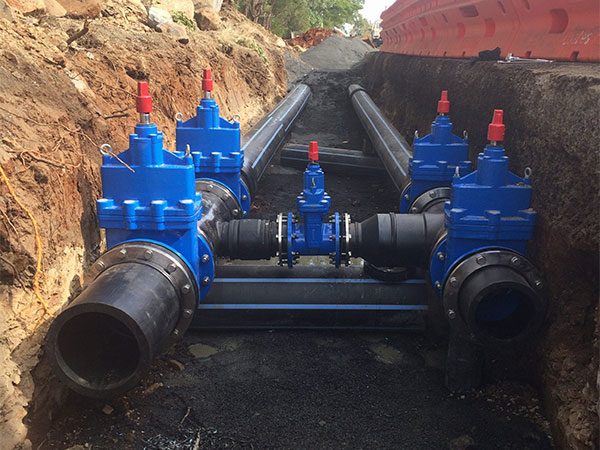SCOPE OF WORKS
- HDD of 1,200 metres of 355mm on grade
- Connection to a valve chamber on Wentworth Avenue
- Construction of a new scour valve chamber and associated overflow pipe to an adjacent sewer, including new manhole construction
- Final connection to a gravity carrier main via a manhole and fabricated stainless steel “oblique connector”
Challenges
As the bore was grade critical and the start and finish points were at a similar elevation, it was necessary to design the project with a scour at the lowest point. UEA devised a project methodology that allowed for the use of polyethylene, posing another design and specification issue as ActewAGL had never constructed similar projects using a polyethylene pressure system.
The main risk with the directional drilling component of the project was the required grade of the rising main. The bore path was designed to avoid the existing services whilst keeping to a depth that would avoid known rock outcrops and the potential of ground water. In order to achieve these parameters, the rising main needed to be constructed at a -1.5% grade for the first 450 metres and then +0.9% for the remaining 750 metres. Two curves were additionally designed into the bore, both approximately 30 degrees. To meet these specifications the client limited the project tolerances to +/- 150mm in the horizontal and +/- 30mm in the vertical.
CONSTRUCTION
UEA used its 25 tonne Vermeer D50 x 100 HDD rig due to its relatively small footprint. The bore could not be completed in a single shot due to design constraints, the accuracy required and the machine parameters. Therefore, UEA developed a method to break the project into four smaller achievable bores ranging in length from 220 metres to 400 metres. The site at which the bores could be positioned was restricted by the location of trees, roads and pedestrian access. As each section of the main was installed, it was then both pressure tested and CCTV inspected to ensure that all sections of the main were not ponding and that the PE welds were structurally sound.
UEA utilised the latest DCI walkover tracking equipment for the project that provided significant accuracy for the duration of the HDD works. Stringent ITP’s and excellent drilling practise ensured the main was installed to the highest possible accuracy within the tolerances set by the client.
COMPLETION
At the time this project was considered cutting edge and the levels of accuracy achieved had never been seen before. Both UEA and the client were nominated for a number of significant awards for delivering the project.

